Expert advice: Choosing the best motorcycle tyres for you

Tyres are the most important part on your bike – your sole connection with the road for the overwhelming majority of the time – but choosing motorbike tyres can be a minefield, and finding a good deal on tyres, even harder.
First of all, it’s very difficult to pick a ‘best tyre’ because your riding experience, the kind of bike you have, and the riding you do will affect what is the most suitable rubber for the job. A Ducati Panigale V4R rider looking for the best trackday tyre will have a completely different set of requirements to a long-distance tourer looking for sports-touring tyres to fit their Suzuki GSX-S1000GT.
Tyres also work differently depending on the bike you fit them to. So, a hard-wearing touring tyre may cope perfectly well with a sub-100bhp middleweight struggle when fitted to a 200bhp superbike. Although this is an extreme example, the concept is true. Even the grip characteristics of differing engine layouts and firing orders can have an effect on tyre performance – not to mention bike weight, braking power, and suspension.
Cut through the jargon with MCN’s tyre explainer video:
Best motorbike tyres at a glance
- Best sports-touring tyres – Metzeler Roadtec SE 01
- Best off-road tyres – Continental TKC80 Twinduro
- Best sporty road tyres – Pirelli Diablo Rosso Corsa IV
In this page, we’ve picked tyres from each genre that we’ve found to perform well across a range of motorcycles. For a more in-depth look at each type of tyre, we’ve also written individual motorcycle tyre category guides. You will also find an in-depth tyre FAQ here, and if you want to save some money you can consider changing your own tyres with our in depth guide.
Best motorbike tyres
Best for sports-tourers
Still the go-to sports touring tyre, the SE 01 steers more like sports rubber, bites hard in the dry, and has incredible levels of wet grip under severe braking and acceleration. They've proven to be a great performer in all on-road scenarios, from dry roads to a wet race track, and offer great confidence and sharp steering.
For all-weather, big mileage riders, you can expect around 6-8,000 miles from a rear, or more. And despite its sportier pretensions, the new Roadtec 01 SE still lets you walk on water whether you ride a naked, sports tourer, or even a sportsbike.
They feature a dual compound rear, and warm up quick enough that you won't have any problems going about your business when a national speed limit sign beckons.
If you're looking for a tyre to look after you in all conditions, the new Metzeler Roadtec 01 SE take the crown from their predecessor as being the go-to sports touring tyres.
Read our full Metzeler Roadtec SE 01 review.
Pros
- Grip from cold
- Incredible wet weather performance
Cons
- Slightly unsettled by bumpy, fast corners
Best for off-roading
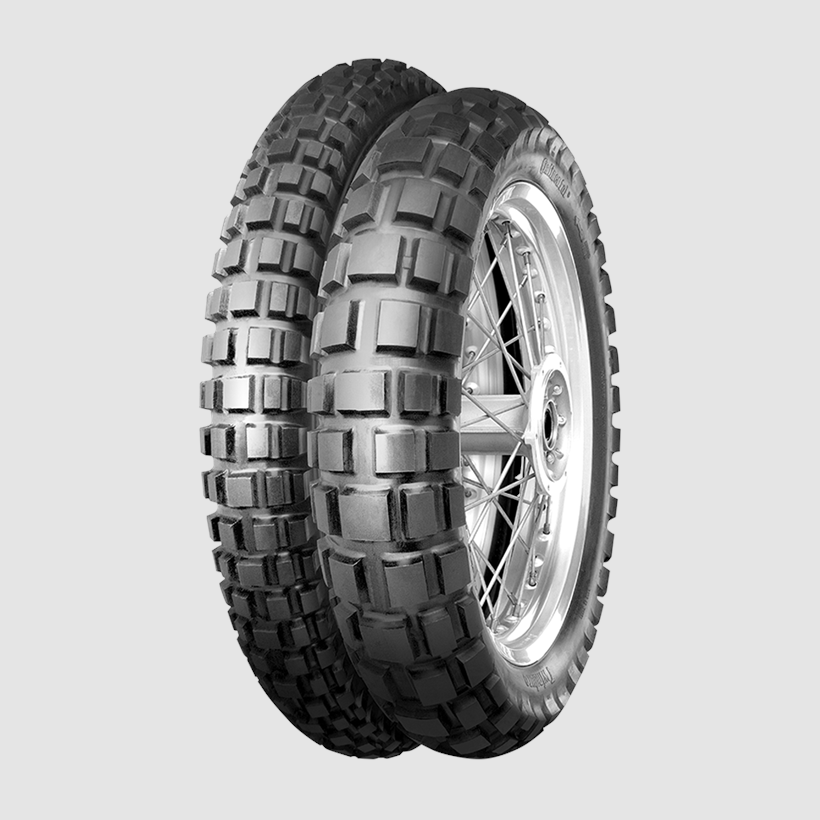

Unless you spend a significant chunk of your riding life exploring greenlanes, the TKC 80s will feel too compromised. They are noisy on the tarmac and prone to a gentle weave at high speed. But if you want something with more ability on the black stuff, then read on.
The continental TKC 80 Twinduro is described by the manufacturer as the 'King of the dual-sport market'. Its large tread blocks give excellent traction in wet and muddy conditions, which make them great for trails and greenlaning. The large spacing is referred to as a 'self-cleaning' tread pattern, which means it will clear mud and gravel away from the tread-block edges, allowing them to steer and drive the bike forward across rough terrain more effectively.
They're claimed to offer remarkable durability too, which makes them a good choice for extensive adventure riding.
Overall the Continental TKC 80 Twinduro tyres make a great off-road tyre that can still take some pavement if needed.
Pros
- Great off-road ability
- Big blocks for mud
Cons
- Noisy and vague on the road
Best dual-sport or adventure-sport tyres
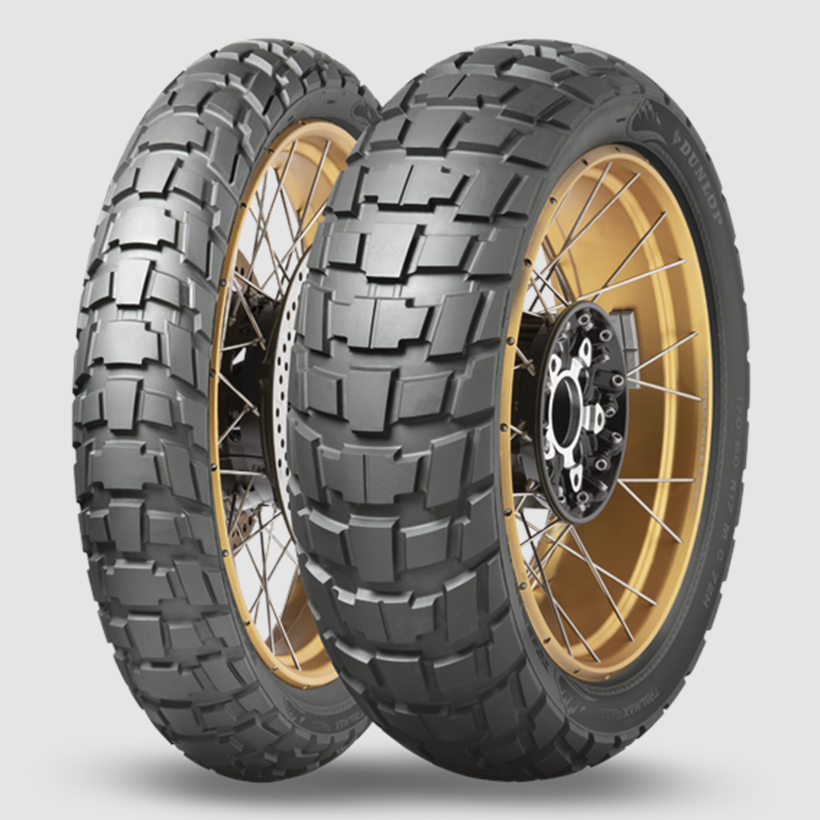

On road, the grip is impressive, and they have a high level of support when braking and under load - qualities that Dunlop are famous for. But despite that signature carcass strength, there's still an impressive amount of feel, and they feel very confidence inspiring to ride. Michael Guy found it hard to put them through anything they can't handle.
Off road, they feel stable and predictable, even on loose, dry sandy gravel. They perform about on-par with some of the more aggressive off-road adventure tyres, such as the Michelin Anakee Wild, or Continental TKC80.
Overall, the Dunlop Trailmax Raid make for a great set of dual-sport or adventure tyres. They perform on par with other adventure tyres off-road, but with much better road performance than you'd expect.
Read our full Dunlop Trailmax Raid review.
Pros
- Excellent on and off-road performance
- Great wet weather performance
Cons
- Still a dual-sport tyre
Best sporty road tyre


They're superb for rapid road riding or on track, only slightly firmer and slower steering than the Supercorsa SP's. They never leave you wanting more on the road, with good stability, and a lot of grip in the wet for such a sporty tyre. If you ride a sports bike, superbike or sporty naked and you like to let your hair down, these are perfect.
They feature wide slick areas on the shoulders to bolster cornering support at extreme lean angles, and they are confidence inspiring to ride hard through corners. This includes a dual-compound construction, that enhances grip in the corners while retaining stability and durability.
Pirelli's patented 'Flash Groove' tread pattern is also claimed to give consistent performance over multiple 'severe' riding sessions, which should offer good durability without much loss of performance compared to their higher-end, or track-day tyres.
Read our full Pirelli Diablo Rosso IV Corsa review.
Pros
- Great performance in wet and dry
- Fast warm-up time
Cons
- Still quite sporty
Best for trackdays


You get to choose from three compounds for both front and rear tyres, depending on what you want to get out of your track day. K1 is a soft compound, that performs best when up to temperature, and offers its best performance on on smooth asphalt. Metzeler say the K1 excels at predictability and edge grip.
K2 is a medium compound, that will perform well at colder temperatures, and offers higher stability and precision when entering a corner. It's the most popular choice for track day riders, for its blend of grip and durability. K2 offers its best performance on abrasive asphalt surfaces.
Finally, K3 offers extra durability over the other two, at the cost of some performance. That makes it ideal for riders who do most of their riding on the road, but will thrash around on the odd track day too.
Pros
- Excellent performance
- Road legal
Cons
- Don't last long
How do I check my motorbike tyre pressures?

Checking your bike tyre pressures on a weekly basis is a really good habit to get into.
Not only will you ensure that your handling stays sweet, but simply crouching down to check pressures and condition of the rubber will help you spot any other adjustments that may be needed to the chain or brakes.
Motorbike tyre pressure tips
- Tyre pressures should always be checked when the tyres are cold. As a rule of thumb, tyres are considered cold when they haven¹t been used for three hours or have travelled for less than a mile.
- Petrol station gauges are better than they used to be, but there’s no substitute for your own gauge, either digital or the pencil type (and don’t forget to replace the valve cap). If the tyre seems to be losing 5-10% a week, check that there isn’t a small leak from the valve itself. Get some spit on the tip of your finger and draw it across the valve so that it forms a film. If it starts to bubble up, you know you need to replace the valve.
Finding the perfect trackday tyre pressure
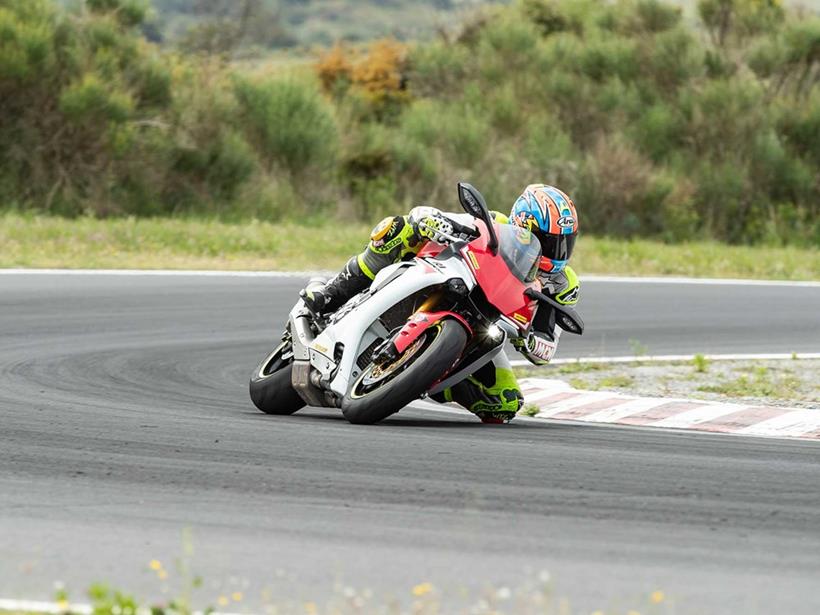
A trackday is a great opportunity to test tyre pressures to find the optimum. Road tyres have to work from the minute they start rolling from the garage when they are cold, so industry advice is to check the pressures when they are cool.
How long they take to become cool after a ride takes depends on the ambient temperature, but a good rule of thumb for a typical British summer day is about 45 minutes.
When it comes to the actual pressures, our recommendation is 36psi front and 42psi rear for road use, dropping four psi front and rear before you start caning it on the track.
Don’t forget to go return to road pressures at the end of the day, especially if you’re riding home from the trackday.
Motorbike tyre sizes explained
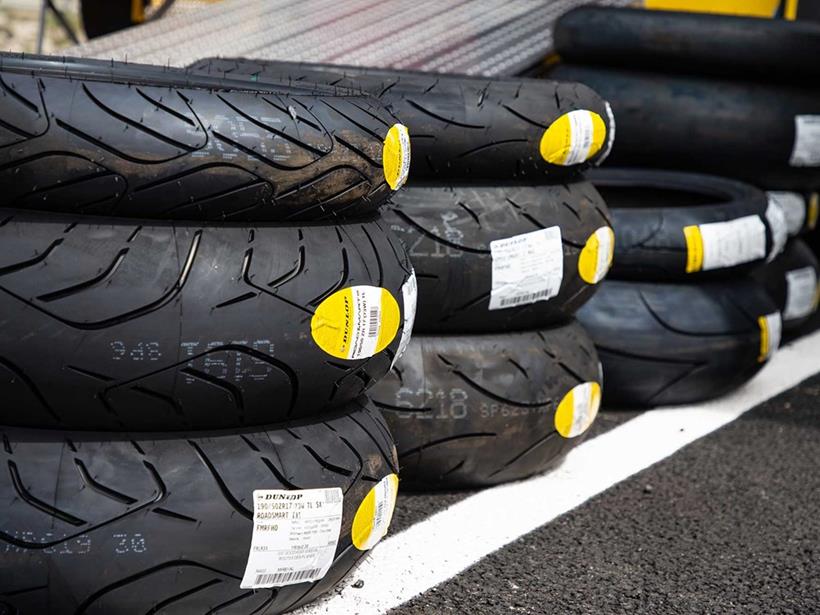
A common question around the size of your bike’s tyres is what the numbers and letters actually mean. For example, what on earth does “120/70 ZR17 M/C (58W)” refer to?
Let’s break it down into its constituent parts. The first part is the tyre’s width in millimetres, so it’s 120mm wide. The next bit is the aspect ratio, meaning its height is expressed as a percentage of width. Here it’s 70% of 120mm, or 84mm tall.
It’s the tyre’s speed rating and type of construction next, so ZR refers to the speed rating Z (capable of being ridden above 149mph) and the construction type R (radial). The 17 refers to the diameter of your wheel in inches, so 17″. M/C simply denotes a motorcycle tyre.
Finally, the 58W is the speed rating and load index respectively. “W” means it’s rated for a maximum speed of 270km/h at its correct pressure and under load, while “58,” tells us it’s rated to carry up to 236kg.
Head here to read the table showing the speed ratings and load index.
How to pick the best motorcycle tyres for you
Motorcycle tyres all look black and round, but you wouldn’t believe how much difference there is between tyre genres.
For many the sheer choice of rubber out there is bewildering. It’s not helped by the fact that just about any tyre on any bike will feel kind of ok, even if it’s the wrong one.
Lots of riders stick to the tyre they and their friends like, but they could be missing out because choosing the right type of tyre is essential to getting the most out of your bike and riding.
There are basically three types of tyres for the road: sports, sports touring and fast road/track. Then there are another two for the circuit: trackday and racing.
On the face of it choosing the right rubber seems easy, but what really is the best tyre for you and what happens if you choose the wrong one?
To find out we’ve gathered all five genres of 17″ rubber from a single manufacturer: Dunlop and we’ll put them through a number of scientific tests at their Mireval facility in the south of France. These tyre categories are indicative of what’s available from Dunlop and most other leading manufacturers.
Scrubbing in motorcycle tyres
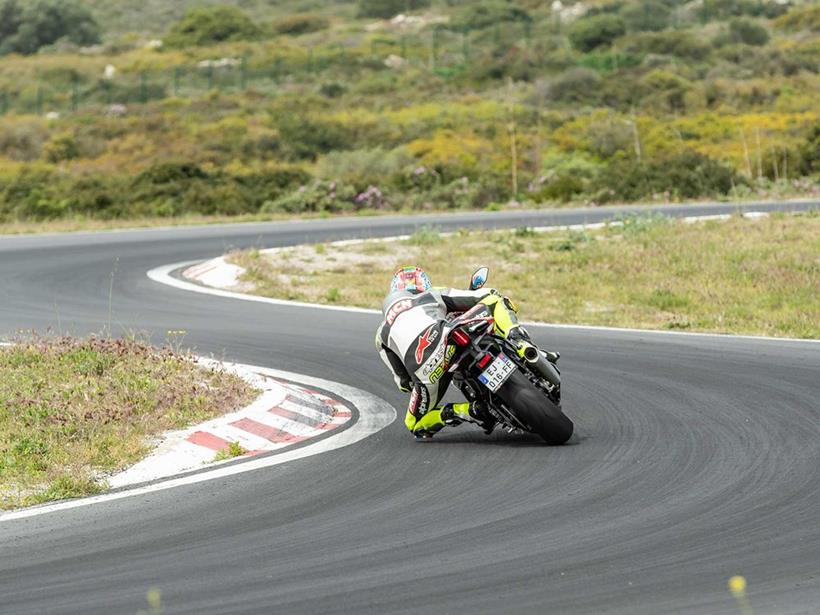
Wondering whether you need to scrub that new set of boots in? The answer’s yes, despite modern technology.
Jim Worland, Metzeler UK Director, told MCN: “There’s a big misconception that tyre moulds have a release agent and that needs to be worn off before the tyre will start to grip. That’s not the case with our tyres, the moulds are highly polished and the tyre comes out easily.
“When you start riding on a new tyre, it’s not just the contact patch that needs bedding in, it’s the whole structure. There are a lot of components including the steel belt, aramid fibres, nylon, rayon, silica, carbon black, oils and a complex mix of elastomers.
“Then there is how the tyre is fitted on the rim, ensuring the beads are properly seated. It’s a running-in process similar to a new bike and it’s important to get the structure working in harmony with the wheel and giving the rider confidence-inspiring feedback.
“One thing that can affect your tyre’s initial performance is how it’s been stored at the dealer or warehouse, as extended exposure to UV light can affect the compound performance.”
How to check motorbike tyre tread depth
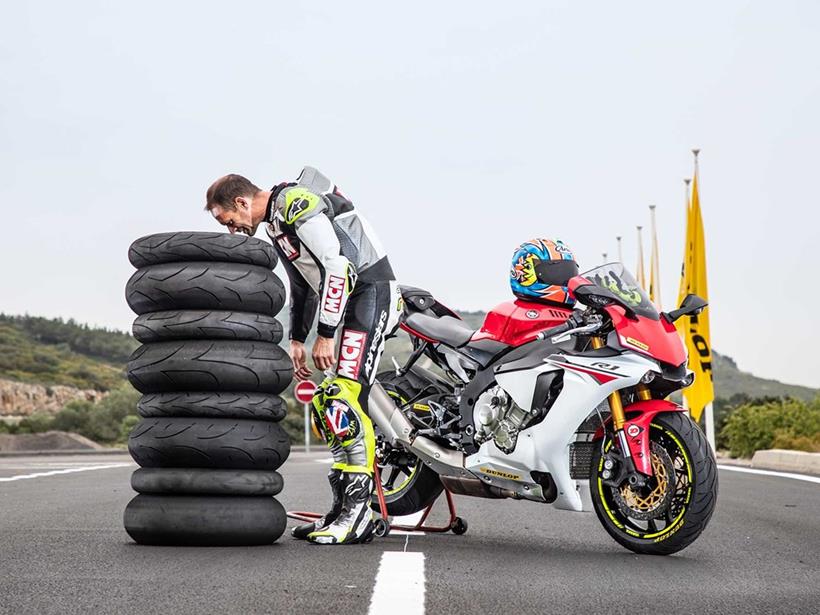
As well as inflating them correctly, the Law says that the grooves of the tread pattern must have a depth of a least 1mm throughout a continuous band measuring at least three-quarters of the breadth of the tread and round the entire outer circumference of the tyre.
As quite a few bike tyres have grooves that don’t extend beyond three-quarters of the breadth of the tread any groove of the original pattern must have a minimum depth of at least 1mm.
That’s the absolute minimum and 2mm is when we’d change our rubber as the tyre’s profile will have altered by then.
Buy yourself a tread depth gauge at your local car accessories shop.
How to check motorcycle tyre condition
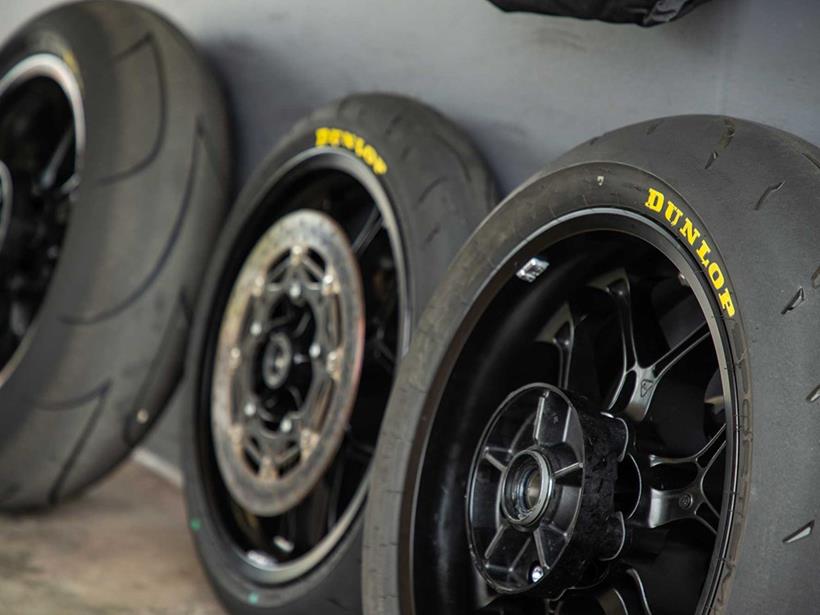
Regular close inspection of a tyre is important, as cuts weaken the tyre’s construction and may be deeper than you think.
Carrying a pillion or luggage can lead to tyre damage. Refer to the owner’s manual for correct tyre pressures with a load. If this isn’t available, a good tip is to add 3psi to both tyres until the correct figure can be obtained from your dealer.
Buying a secondhand bike is stressful, and worrying about the condition of the engine can mean missing out on other areas – tyres are arguably as important as the motor. Check the tyres are in good nick, especially on older bikes with original tyres – tyres perish if left in sunlight or if they have come into contact with fuel or oil.
A punctured tyre can be temporarily repaired as long as the puncture isn’t too big (fingernail size penetration) and is on the treaded area only – never ever on the tyre’s sidewalls. Any repair (sealing mousse or internal mushroom patch/plug) must be treated as temporary and the tyre replaced asap. The running speed of the bike must also be reduced as heat can weaken the repair. Repairs should not be carried out to tyres of over speed rating ‘Z’ (149mph – most 600cc bikes and above) – how would you feel if your secondhand GSX-R’s unknown repair blew out at that speed? Larger holes shouldn’t be repaired as the inner carcass is more likely to have been damaged.
A leaking (Schrader) tyre valve core – detected by placing spit on top of the valve to see if it bubbles up – can be cured by tightening the core with a valve key (above left). Replace the core or valve if it still leaks after tightening. Also note that hot air expands, so the core might only leak when the tyre is hot and the air pressure within has grown.
Valve caps are important to retaining air inside a tyre – any flash, gimmicky caps that don’t have a rubber-sealing ring inside them should be thrown away. Why? The seal prevents dust from entering the valve core, causing it to stick. It might also stop all the air from escaping in one hit if the valve core works loose.
Although tyres are made to exacting standards, there is always an imbalance between a new tyre and the rim. An unbalanced tyre will cause vibration and accelerate tyre wear. Balancing by use of weights is best left to dynamic machine balancers as they can detect exactly which part of the rim needs added weight.
Motorbike tyres when carrying a pillion
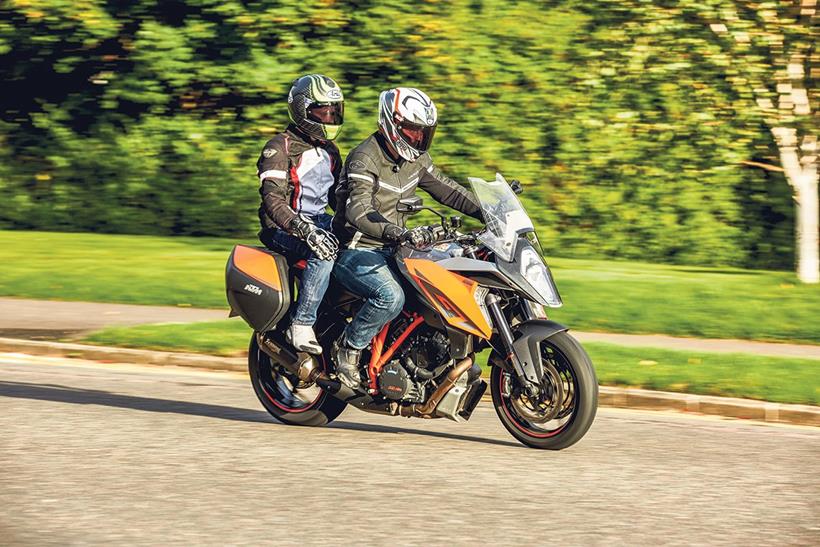
A lot of bikers don’t bother changing their tyre pressures for when they carry a pillion, but it is advisable to do so. If you have it handy, refer to the owner’s manual for correct tyre pressures for carrying pillions. If you don’t have the manual handy then it’s best to add 3psi – 5psi to account for the extra weight.
Motorbike tyre reviews by MCN
- Pirelli Angel GT II – ultimate all-rounders
- Dunlop SportSmart Mk3 – have your cake, and eat it
- Continental ContiTrailAttack 3 – impressive feedback and grip
- Bridgestone S22 – you won’t go far wrong fitting a set
About the author: Michael Neeves has been an MCN Road Tester since 2002. He’s reviewed everything from mopeds to Rossi’s Yamaha M1, and plenty in between. He covers tens of thousands of miles a year on the world’s roads and racetracks in his role with MCN, and when he’s not working he’s still on two wheels, racing both modern and classic superbikes for a variety of teams.
- Just so you know, we may receive a commission or other compensation from the links on this website - read why you should trust us.


